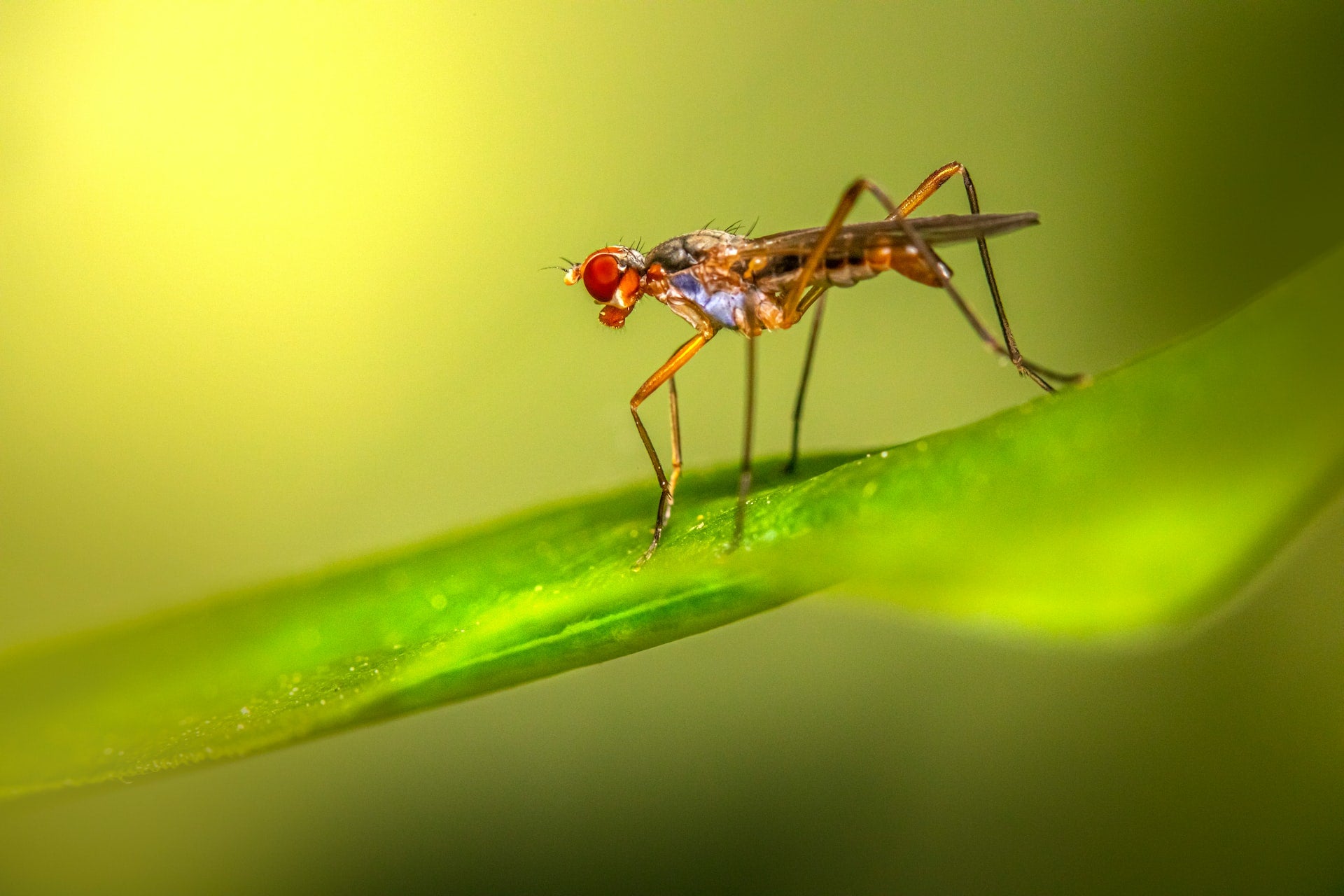How Do I Get Rid of Common Houseplant Pests? (Gnats, Mealybugs, Whiteflies & Spider Mites)
When a houseplant is in good shape, it is vital to keep them healthy and happy. Even though the garden is treated well, it may still contain pests. Occasionally. A few houseplant bugs are harmless and will not harm your plants. Please do not panic too much. Pest control methods are often a simple matter with just patience.

It is also worth noting that, like any plant, houseplants are prone to attract all types of creepy crawlies. If for some reason, you do see a creepy crawly or fly, this is normal, and part of the natural environment and we wouldn't encourage you to kill nature.
We recommend you only take measures into your own hands if you notice an infestation in or around your houseplant that can cause the houseplant to wilt and die. This article will outline all sorts of pests your houseplant may attract and how to safely resolve the infestation.
Eco-Friendly versus Chemical Control
We will always opt towards eco-friendly measures when it comes to pest eradication. This is because we have a love towards our indoor plants and nature. Neem oil which we will discuss later in this article, is a natural and effective method. Still, I'd recommend it as a prevention tool against pest eradication, as Neem oil is ineffective against all critters. The truth behind eco-friendly and chemical control is whilst we prefer to use eco-friendly, chemical control options occasionally must be considered where appropriate.
Some Common Houseplant Pests (like Gnats!)
Mealybugs
Mealybugs can often be misconceived as they are similar to scales because they have a waxy coating and make the honeydew. Their presence leaves waxy deposits on the houseplant and sometimes yellowing and wilted leaves, which results in distorted or stunted plant growth. Mealybugs group on the undersides of leaves and joints to spot these pests. The houseplant will begin looking dehydrated, and the leaves will droop and die rapidly. The female Mealybugs lay their eggs on cotton-like material; Hoya, Jade, Gardenia, and Poinsettias houseplants tend to be more susceptible to these critters, but that does not mean different houseplants cannot get these pests.

How to Control Mealybugs
A natural way of eradicating Mealybugs is by spraying them with water or gently shaking the plant outside or in a bathtub. Another method is using Neem oil, partnered with some insecticidal soap. If the infestation of Mealybugs is more significant, chemical control may be necessary. Use a cotton swap or cloth dipped in 70% isopropyl alcohol and gently wipe the leaves and undersides to eradicate them.
Whiteflies
Whiteflies are tiny, winged pests with a super-white appearance. Whiteflies, like other pests, suck sap from the houseplant leaves, causing the leaves to turn yellow, droop, and die. The immature whiteflies that do not move much can be misconceived as scales. However, mature whiteflies fly around when disturbed. You can find these pests on the underside of the leaves.

How to Control Whiteflies?
Thankfully, natural remedies do work well against whiteflies. Using Neem oil and an excellent insecticidal soap will eradicate a whitefly infestation. Ensure a thorough application, particularly on the underside of the houseplants' leaves, as this is where the immature whiteflies will reside, helping you break the whitefly cycle. I suggest using the Neem oil and insecticidal soap once a week until there are no symptoms of an infestation.
Spider Mites
Ah, Spider Mites… they may be one of the more annoying pests as they can damage your precious houseplant if you do not take immediate action whenever you see the first signs of an infestation. These little critters are so tiny that you will not even be able to see them, but they will leave signs and residue that will help you identify them. They suck the sap from the leaves of your houseplants which causes them to discolour. This means you may see some of your leaves discolouring; unfortunately, even if you eradicate the Spider Mites, they may not get their original colour back. They usually reside on the underside of the leaves, but you will notice their silky white webs on the axils and veins of the leaves.

How to Control Spider Mites
These infestations can be difficult to control, especially if you do not catch them early. Regularly check your houseplants, including the undersides, as it can make a big difference. I've found the best natural way of removing these pests is creating an environment that they do not like, a humid one. Regularly mist your leaves and/or use a humidifier. The most effective way is by dampening a cloth with 70% isopropyl alcohol and wiping both sides of the leaves. If the infestation is nasty, I suggest repotting the houseplant.
Fungus Gnats
One of the more annoying pest infestations to have, Fungus Gnats are small flies which quickly multiply, forming a colony that fly around the base of your houseplants. Extremely frustrating! This is the most common pest within our homes, so we will inevitably encounter these pests at some point. Fortunately, Fungus Gnats cause more of a nuisance than harm to our houseplants. Nevertheless, there are many ways to eradicate this pest issue, and we have a full in-depth guide to houseplants Gnats here.

How to Control Fungus Gnats
The best way to control and eradicate a fungus gnat infestation is by allowing the soil to dry in between waterings, repotting the soil and ensuring that you use insecticidal soap to control the larvae, and lastly, using sticky traps which will attract and trap many of the fungus gnats, causing a disruption in the reproduction cycle.
Aphids
Another sap-sucking pest can cause your actual houseplant harm if you don't catch them early in an infestation. Like Mealybugs, Aphids produce sticky honeydew. These annoying pests can attack an array of houseplants, especially those tender, new-growth houseplants where Aphids create the most damage. They are typically green but can be black or grey, hidden from obvious light and under leaves, they are a tricky pest to identify, but they can be seen by the naked eye. Aphids tend to live around 2 or 3 weeks long and reproduce rapidly. You can understand why we recommend catching Aphids before they become a real problem!

How to Control Aphids?
The excellent news is that Aphids are really easy to control, and in many cases, Aphids will not require anything more than soapy water with a hard spray down. Take your plant outside, place it in a bathtub, and give it a good spray. Insecticidal soaps and Neem oil is also effective, but I would use these tools as a preventative.
In conclusion, if you want to eradicate or prevent pests, it will start with a habit of inspecting your houseplants when you water them. If you identify possible infestations, you should quarantine the houseplant away from others as soon as possible to avoid spreading the infestation. The key to success is always to be persistent and catch them early.

Welcome to the world of indoor plants! If you're looking for a way to bring some life and colour into your home, you've come to the right place. We're here to help you find the perfect house plants to suit your style and needs. Whether you're looking for small, compact plants to brighten up your windowsill or large, statement plants to make a bold impact, we've got you covered.
One of the challenges of growing indoor plants is dealing with pests, tiny black flies. This blog will share tips and tricks on keeping your plants healthy and free of pests. Indoor plants are a great way to add greenery and freshness to your home. And if you're looking for large indoor plants that can make a statement, you're in luck! With so many beautiful options available, you can find one that fits your style and space. From the delicate and dainty string of hearts to the towering ficus benjamina, there's a plant for every style and taste.










Leave a comment